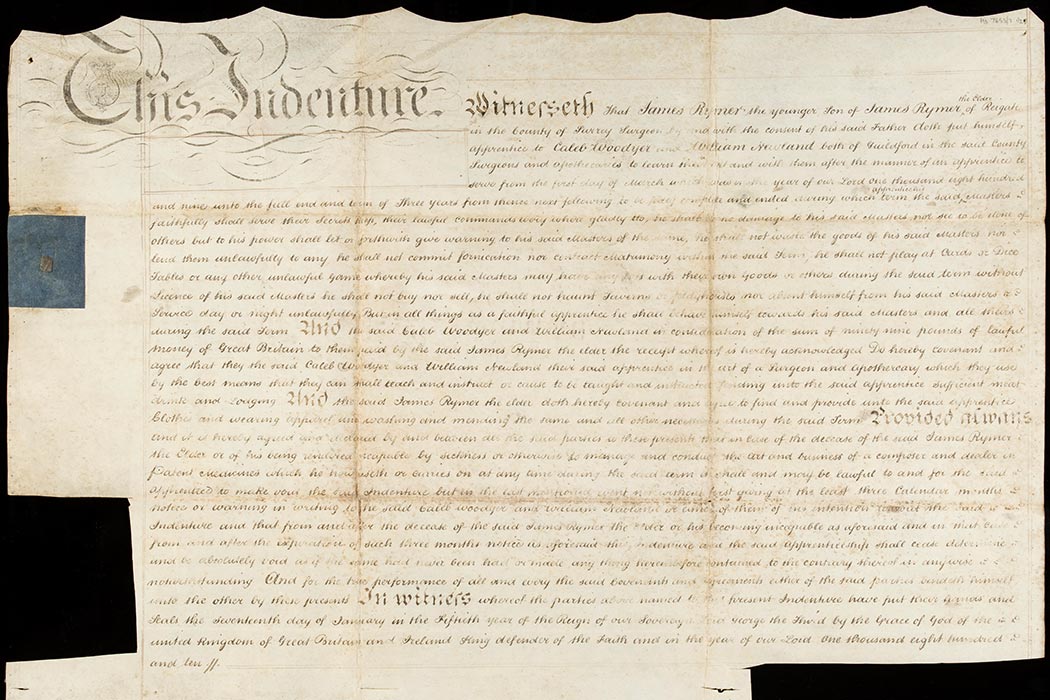Our ideas about poverty and joblessness have changed dramatically since colonial times.
As Democratic and Republican candidates keep debating the economy, it’s clear that as different as their ideas might be, all contemporary political candidates have one thing in common: a preoccupation with unemployment and job creation.
Americans weren’t always so concerned about jobs. Colonial government spending was primarily for war, and most of its economic policy debates took place in that context. Today’s American government, of course, spends substantial sums on the military, but our biggest expenditures are on the social safety net. Colonial governments didn’t spend large amounts of money to support the poor and unemployed. They did intervene extensively to manage poverty. But their primary tool for doing this was via the household, which included all kinds of relationships far beyond the nuclear family.
Many 18th-century households included not only relatives and slaves, but also indentured servants, people sold into bondage for a specified length of time (some voluntarily, others sold by relatives or forced into the arrangement by the government.). New immigrants, convict laborers, “paupers,” and poor children were the most common indentured servants. Another colonial practice was “out relief,” in which households took paupers in, often with compensation from the local government. The paupers were expected to work hard to support their hosts.
These weren’t just options for poor people; unemployment and indigence were harshly discouraged under colonial law. As Hunter College professor Mimi Abramovitz wrote in Social Service Review:
“The laws contained strong penalties against idleness and vagrancy, because nonproductive people threatened the often isolated and self-sufficient community’s economy and challenged prevailing work norms. These laws, combined with Puritan dictates, meant that women along with men and children were expected to work hard or face jail, expulsion from town, or harsh physical punishment.”
As limited as local colonial governments’ obligations to the poor were, they extended only to those who were already part of the community. Strangers entering a community had to either post bond, were informed they didn’t qualify for relief, or were simply chased out of town. Those who brought indentured servants into a community had to promise to take care of them in old age or infirmity.
Similar attitudes toward indentured servants prevailed about slaves. Economist Benjamin Joseph Klebaner showed this very clearly in his analysis of American manumission laws. If a slave owner voluntarily freed a slave, he’d have to post bond just as anyone who brought strangers into a community had to do. The only exceptions were for younger slaves who were freed for “merit” and judged to be capable of taking care of him or herself by the legislature, the governor, or some other “trustworthy” group. The money put up was meant to prevent them from being a burden on the state. Those slaves who did become public charges or were freed without posting bond either had their manumission canceled or the former slave owner was sued to support him or her, similar to child support today. The “deserving” slave or indentured servant was one who both submitted to a master but who, either through rapt attention or uncommon skill, became capable and deserving of independence.
The idea behind all these practices and laws was to maximize the amount of hard work being done, as well as to place poor people under the someone else’s discipline—colonial Americans thought poverty was caused by idleness, which they viewed as a sin—and minimize their burden on the public.
Public money, the subsidy provided for out relief, for example, was only needed when the cost of supporting a person was greater than the benefit that a householder could reap from his labor—that is, when someone was unsellable as an indentured servant. Colonial laws were meant to minimize the burden of the unemployed, disabled, and the elderly on other members of the community and to force work upon anyone who was able.
As towns grew and the numbers of paupers increased, indentured servitude and out relief alone could no longer address poverty, and towns started building poorhouses where paupers could live (these people were also required to work). The more paupers there were, the more cost-effective housing them in the same building became. But until the early to mid-19th-century, unemployment and poverty were viewed as problems that could be solved at the household level.
Since then, there has been a shift in thinking about poverty relief that has had major implications for fiscal policy. Slavery and forced indenture have long been abolished. Meanwhile, modern, post-New Deal social safety nets were established to set a minimum standard of living. These programs don’t coerce work as brutally (though welfare recipients, since the Clinton Administration, do face work requirements and time limits). Despite cuts in the past 20 years, guaranteeing that minimum standard of living for some (especially the elderly) has entailed large amounts of government spending. This situation, and deep public resentment of such spending, has made unemployment and job creation a central goal of all economic policy-making.
How much the government should spend to combat recessions, and which policies will best create jobs, have become our most salient economic questions. That this is so reflects a dramatic shift between colonial life and our own, from an economy centered on the household to one demanding far more public involvement.







